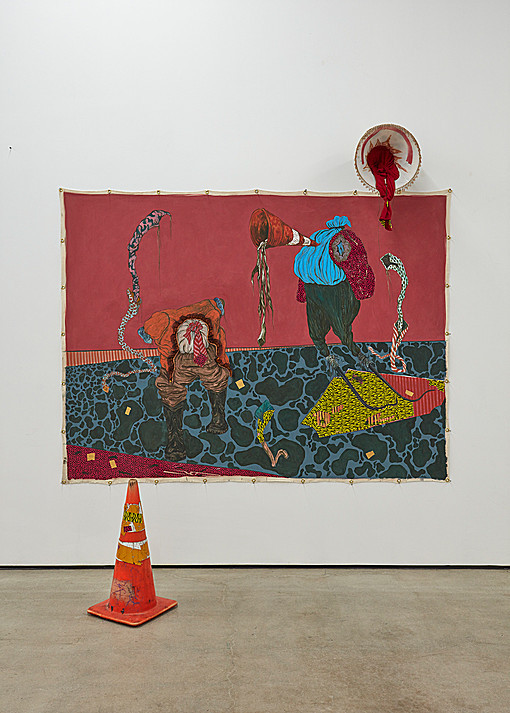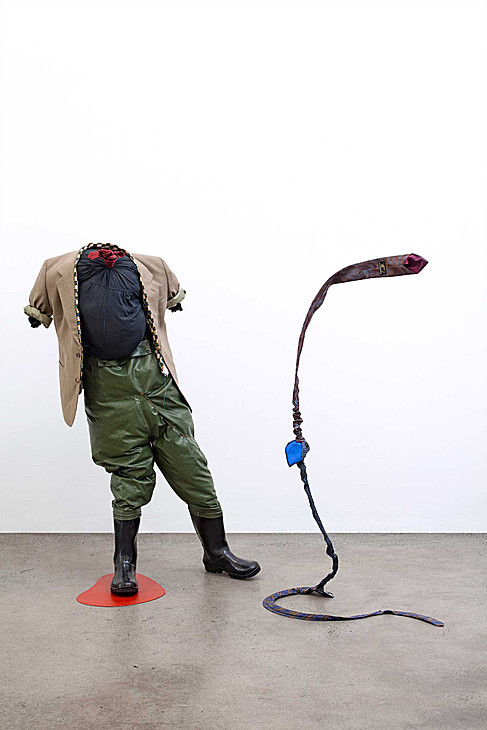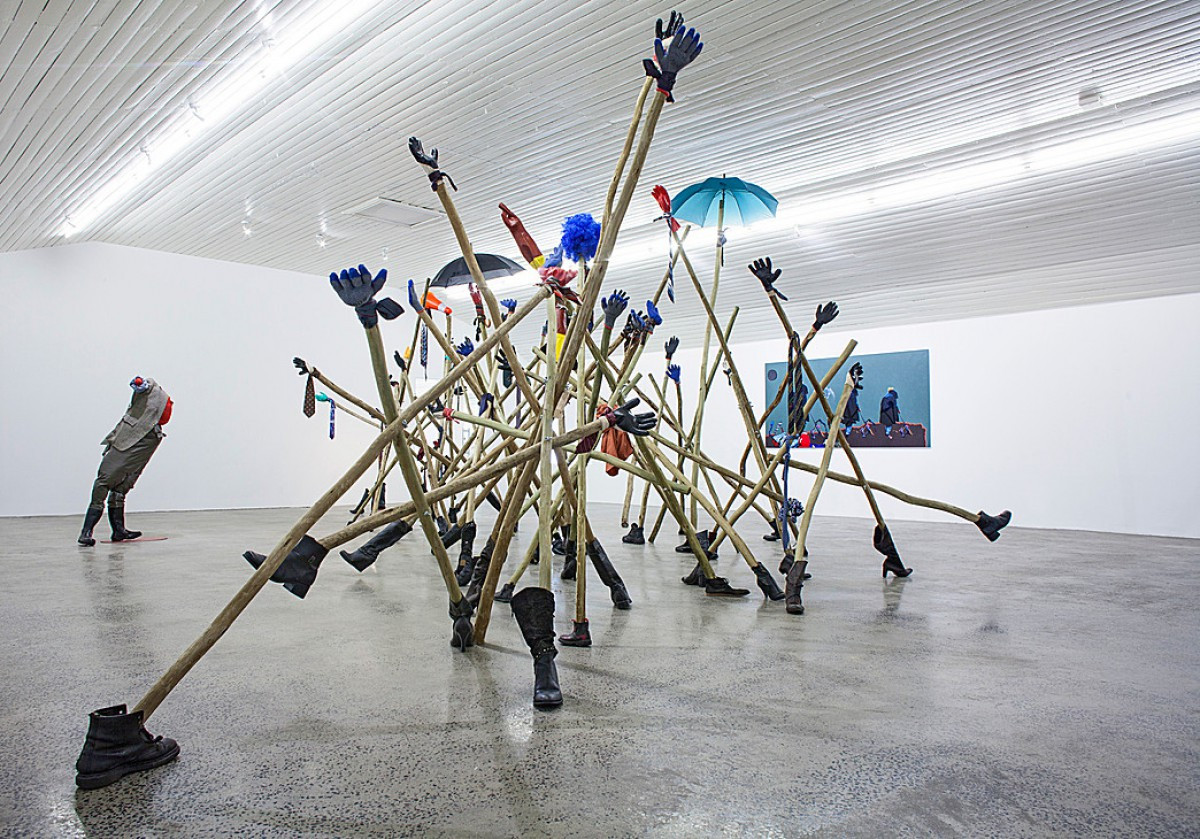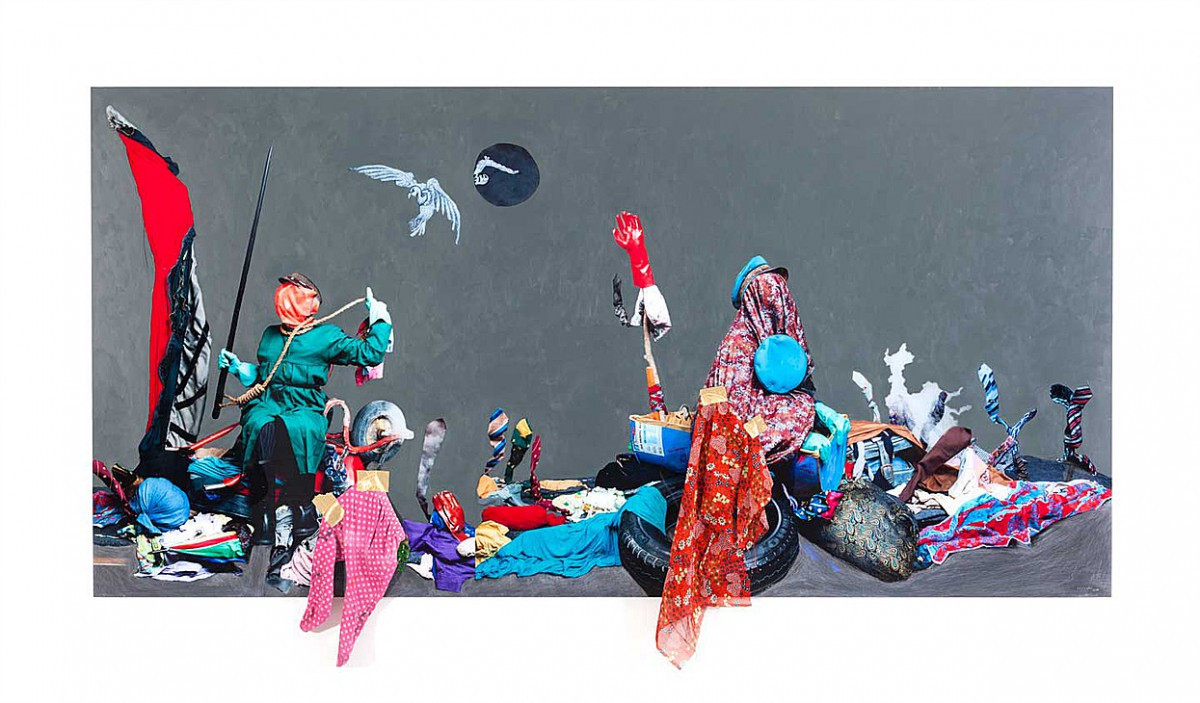Simphiwe Ndzube
Published: March, 2017, ZOO MAGAZINE #54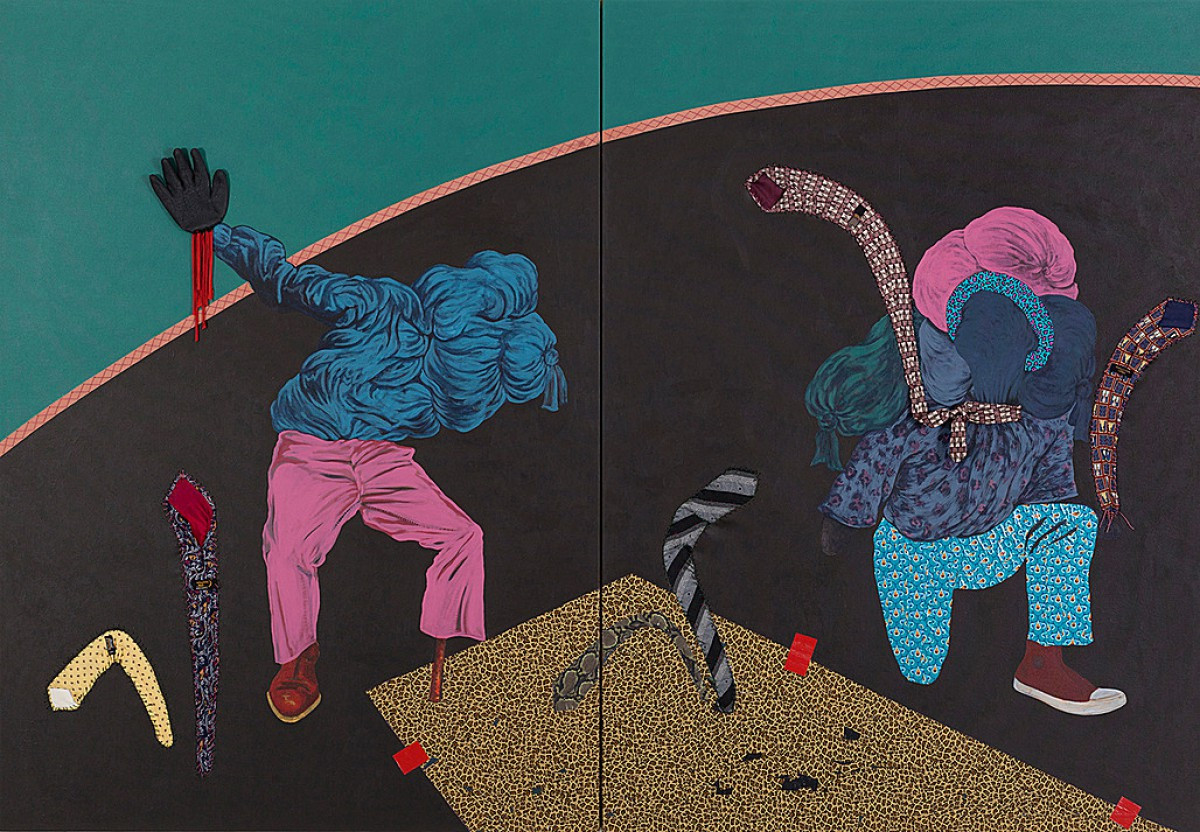
Marta Gnyp: Let’s start from the very beginning of your artistic path.
Simphiwe Ndzube: Art has always been something I’ve been invested in but I never saw it as art — more as way of being. When I was a kid, I was already drawing before I started going to school. As kids we made our own toys and miniature furniture from clay. No one knew what we were doing but we made our toys from wire, discarded boxes, and broken toys. Imagination was really at play at the time, and since then, I’ve held on to the child in me.
MG: What did you draw?
SN: We didn’t have paper and paints so we would use sticks to engrave different types of games on the street. To me, that was the first introduction to art — we had no limitations, everyone had a part in it.
MG: Probably not all of your friends who participated in these games became artists.
SN: Unfortunately, as far as I know, out of all the kids I grew up with, I’m the only one who pursued art beyond where it all began. Even though many of them had greater talent than I had.
MG: Why do you think you are the only one who ended up doing art?
SN: I received a great deal of support from my mother, who didn’t understand art but allowed me a chance to go for this thing which I loved. On the flipside, the infrastructure to nurture and develop talents in black schools continues to be really poor and not supported by the Department of Education even way after the demise of the Apartheid government, which did not allow art in those schools. In a system like that, a lot of creative individuals are denied the space to develop and as a result the majority end up believing it’s not worthwhile to even try.
MG: Your path to becoming an artist seems to have developed organically. How did you like the art history and art theory that probably entered your life at art school?
SN: Going to an art school helped broaden my perspectives of what is and what could be through engagement with global art discourses. However, I have not been really good at applying those modes of thought to my work. If you go to an art school, you could be easily stripped of your imagination.
MG: Understood as original impulsive creativity?
SN: Yes. Learning to listen to that immediate thought, that feeling and desire to want to create. But also allowing an understanding of why and how one is drawn to things, sometimes familiar and sometimes strange. In art schools, one is sometimes forced to over-interrogate what one feels, almost to the point that it cripples the imagination and freedom.
MG: What about South African art?
SN: The conversation hasn’t changed much. But we do see a great deal of different types of people from different races and sexual orientations participating in shaping what gets produced in the country today. It is very exciting.
MG: Is there a lively contemporary art scene in South Africa?
SN: I think the art scene has always been lively, but again, the problem has been who was allowed a platform for visibility and whose voice was silenced in the process.
MG: Are you suggesting that you were limited in South Africa?
SN: Being black in South Africa, I have felt pressure to make work about our subjugation and violence. Maybe because the wounds and the legacy are still so fresh that it has also become a trap beyond which South African art conversations have not been able to move. It is still a relevant conversation, perhaps even more so today, but I feel it has become too much of a “trend,” of which I too am a participant.
MG: You want to clean up your work from the obligatory political agenda.
SN: My work will remain focused on a particular aesthetic but I’m very excited to expand a bit and open up the conversation surrounding my work.
MG: How important is the postcolonial discourse for you? Do you see your art as part of this conversation?
SN: I have recently learned that images can sometimes be limited when explained in language and certain modes of discourse when, in fact, the image could mean much more depending on who is looking at it and what context they come from. I see my work as an attempt to try to open multiple interpretations and to learn from that.
MG: What do you want your work to be?
SN: Beautiful, uncomfortable, and imaginative.
MG: Are you trying to avoid being categorized as an African artist?
SN: I feel implicated but not sure if I’m capable of representing or speaking for Africa in my work. It’s a continent with fi fty-four countries and about 3,000 languages. How can I possibly do justice to all that?
MG: How to get rid of being categorized as African artist?
SN: By constantly interrogating the possibilities of what my work could mean and what context it is shown in. Also by traveling and seeing more around the world, including my continent, which I feel embarrassed not to have travelled.
MG: Why did you give found objects such a significant place in your work?
SN: Found objects have the potential to tell stories beyond what I can sometimes do; their residue use and their patina often reveal a whole history of cultural exchange and how much more interconnected our world is than we may think.
MG: What conversations are you interested in?
SN: The human journey, mobility and immobility of the body, found materials, fantasy, beauty, and resistance.
MG: Let’s analyze one of your works to understand better what you mean. Yesterday, I saw this figurative painting expanding into sculpture through what were probably found objects, like a shoe that is placed on the ground. The headless figure in the painting is sitting on a real rope that connects it with the real objects. I heard somebody asking whether the figure is a self-portrait of the artist.
SN: In my understanding, what artists make is, to a certain extent, an extension of themselves. It somehow shows what is happening in the backs of our minds, how we analyze the world and how we project the world back to ourselves. There is a recurring appearance of the figure in my work; part dandy, part worker and warrior. Often raceless and androgynous, with the body not fully formed. I often imagine these figures existing in a fantasy landscape patched with cutout duct tape and patterns with these snake ties growing as obstacles and strange plants. For me, they all speak of the struggle of being human or claiming to be seen and recognized within our standards of what has been normalized as “human”.
MG: This is the universal aspect of your work.
SN: In the end, we are all humans.
MG: How do you go to work? Do you have projects or concepts in mind, or do you just work spontaneously?
SN: My first show was really about allowing myself that creative impulse, so I worked spontaneously, but with the consciousness of an aesthetic process I’m still developing. Sometimes I begin a work based on a shape I saw in the street, or an image. But that form or image is always altered and often ends up looking very different.
MG: What ideas dominate your work now?
SN: The appearance of the dandy figure and flat colors.
MG: Is this somehow related to the still very much alive opposition between abstraction and figuration?
SN: My work is not a reaction to art, but responsive to a broader collective movement of black community that I’m part of. I created this installation titled The Rain Prayers, which was the first work in which I broke the full figure into a procession of sticks with gloves and shoes. That work was in response to the protests that have been prevalent in South Africa: women, men, and kids were coming together as a community, and all of a sudden, realized the power they have as a collective. They made their voices heard through alternative ways of organizing. To address this, I used the metaphor of people coming together to pray for rain during severe drought. A combination of faith and community mobilizing around one idea to be able to move mountains. It’s a practice that is no longer prevalent. People have lost faith in things changing and their suffering eventually coming to an end.
MG: Does the idea of beauty attract you?
SN: I think I find beauty an interesting phenomenon and a rather strange human practice — determining what is beautiful and what is not. Eventually all taste is learned and acquired, but the problem is when it is projected for everyone to subscribe to — who is it that makes the rules?
MG: The relation to the human size also seems relevant.
SN: There is often an overwhelming feeling one experiences when looking at an artwork that it is larger than life. It demands to be looked at and it claims a sense of importance.
MG: Is the language of your titles an element of your work?
SN: I speak isiXhosa as my home language and English as my second. My titles are drawn from both these languages, depending on the need and relevance for the artwork. Xhosa titles are sometimes so nuanced that they don’t sound so good in English.
MG: The danger is that such a title will render your work illegible to most viewers.
SN: It forces people to have a different conversation; it decolonizes the normal. If you come from outside, you are excluded. You see the image that welcomes you, but you are blocked by the title. Only the locals understand the language.
MG: Do your local people understand what you are doing in general?
SN: I remember my old aunt said to me a year ago that she doesn’t like the work that I’m doing now, but that she really appreciated the portraits that I was doing in high school. The new element of violence clashes with her spiritual beliefs.
MG: Do you mind that your work has become less understandable to your original environment?
SN: I think artworks in general, or at least work that is created today, is not always easy to understand. What’s been interesting for me to see is how my family, who don’t have an art background, interact with my work. To them, objects don’t have a higher value than humans and the art object is not something to be praised.
MG: Despite this, do you try to involve them in what you are doing?
SL: I have a massive family and they come to all my exhibitions. Their way of behaving in the gallery spaces completely go against the norms. They behave differently than people who have been taught how to interact with art. People scream, dance, chant, and take photos holding sculptures, very interactive.
MG: Is this one of the reasons you make work that is loose?
SL: Not really. It took a long time before I stopped touching and smelling works in museums myself.
MG: You recently moved to Los Angeles. Not primarily because of art, but because of a reason unrelated to art. Do you expect that your work will take another turn?
SL: I think it will be very interesting to refl ect on home from a distance. I’m keen to learn more about myself and the world beyond South Africa, and I know that this will certainly have some kind of an impact in my work, which I am excited about and very much open to.
